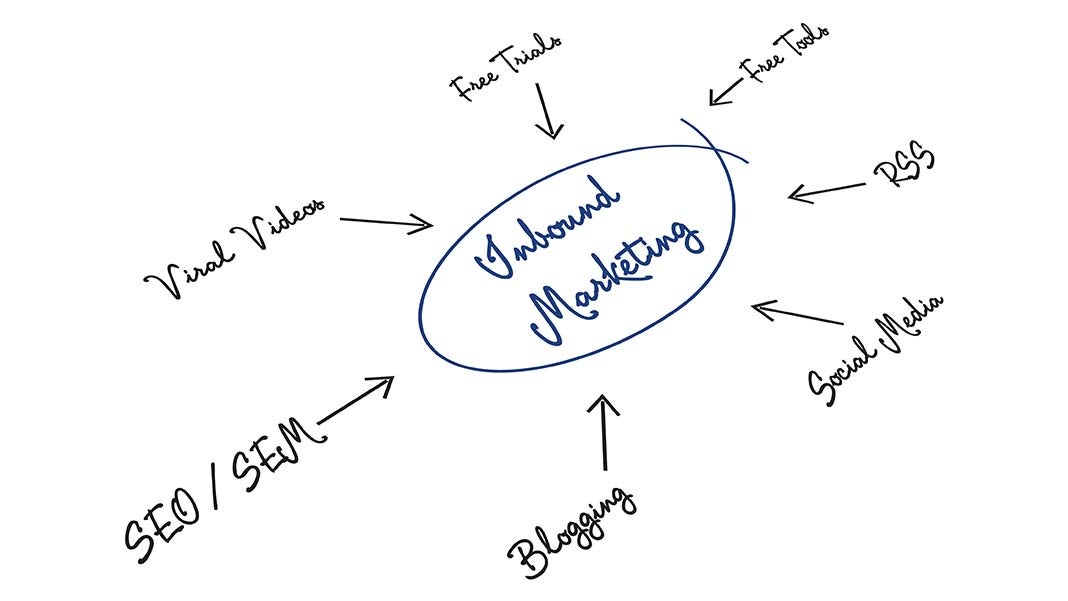
It’s that time of year again. The eighth installment of HubSpot’s annual State of Inbound 2016 Report was recently published by the Boston-based inbound marketing automation software provider. Even though I read it every year, what I found particularly intriguing about this current offering is its generally brand-agnostic methodology. The vast majority (85%) of the study’s 4,500 global respondents (from over 132 countries) are actually non-HubSpot customers with marketing backgrounds in B2B, B2C, small, and mid-sized businesses. Moreover, nearly one-quarter (24%) of survey respondents named “outbound marketing” as their company’s primary approach to marketing. This unique methodology offers marketers and SMBs relatively unbiased insight into prevailing inbound marketing norms and best practices the world over, and how they compare with more traditional outbound methods.
Here are three inbound marketing insights I gleaned from the Report.
I. The Maturation of Inbound
The top three marketing and sales priorities of companies represented by survey respondents suggest organizations are beginning to recognize the relevance and value of popular inbound marketing objectives at every stage of the customer lifecycle.
- Lead Generation/Conversion– 74% named converting contacts/leads into customers as a top marketing/sales priority.
- Increasing Web Traffic– 57% cited growing traffic to websites as a leading focus.
- Upselling– 46% listed increasing revenue derived from existing customers as a chief aim.
In its early days, inbound marketing was principally focused on the top-of-the-funnel, as practitioners worked to leverage web-based content and SEO to drive website traffic and generate leads. Over the years, inbound has experienced a gradual shift in emphasis from merely attracting prospects to nurturing them down the sales funnel into satisfied customers and lifelong advocates—i.e. a shift to sales conversion and the maximization of customer lifetime value (CLV). I see this as evidence of the maturation of inbound into a comprehensive sales and marketing methodology that takes a holistic approach to the customer journey to generate measurable ROI.
II. The Effectiveness of Inbound
Analyzing the composition of effective marketing organizations, the Report noted that inbound organization respondents were four times as likely to rate their marketing strategy highly as respondents from outbound organizations.
When survey respondents were asked the following question, “Based on your organization’s approach to marketing, do you feel that your marketing strategy is effective?,” 81% of “yes” respondents identified themselves as working for companies that primarily conducted inbound marketing, whereas only 18% of yes votes identified themselves as working for companies that primarily conducted outbound marketing.
Lead quality is always an issue for companies. When asked which marketing approach provides the highest quality leads for your sales team, 59% of marketers named inbound practices, while 17% named outbound. This makes sense, given the customer-centric (and customer initiated) nature of the digital age we live in, which tends to organically mesh with inbound marketing process. HubSpot CEO Brian Halligan echoed this sentiment in the introduction to the Report:
Inbound means transforming how we do business to be more helpful, more human, more empathetic. It focuses on the whole process of turning a stranger into a delighted customer. Inbound is about matching the way you market and sell with the way people actually want to shop and buy.
I’m no data scientist, but I think it’s safe to assume a positive correlation between delighted customers and quality leads.
One thing both inbound-oriented and outbound-oriented organizations can agree on: offline paid advertising is the most overrated marketing tactic (i.e. print, outdoor, etc.)—33% of inbound and 31% of outbound companies said as much. It’s worth noting that, throughout the report, HubSpot identifies outbound marketing as synonymous with paid advertising.
III. Inbound Adoption Varies by Industry
The Report suggests there is still a fairly wide variance in the adoption rates of inbound marketing among industry sectors. The following graphic breaks down the different levels of inbound adoption by industry.
Image Credit: HubSpot
As the graphic illustrates, tech-centric industries like software, IT, and Ecommerce tend to be heavily invested in inbound marketing, whereas more traditional industry segments like industrial & manufacturing, financial services, and healthcare & medical tend to lag behind. This should come as no surprise, as much of the inbound movement has been driven by early adopters of erstwhile novel marketing techniques and technologies like SEO and marketing automation software—technologies first conceived and implemented in the tech sector.
It’d be interesting to see some data on the rate of increase in inbound adoption by companies in more traditional industry segments (i.e healthcare & medical and industrial & manufacturing) in recent years. According to the survey data, 57% of healthcare & medical companies and 59% of industrial and manufacturing companies have embraced inbound as their primary approach to marketing. While clearly there is still a lot of room for growth, I’d be willing to bet that inbound adoption rates have increased rapidly in these sectors in the past couple of years.
Finally, it’s worth noting that inbound was the primary marketing approach of a majority of companies across all 12 industry sectors highlighted in the Report.
Conclusion
As someone who bought into the inbound philosophy early on, I’m pleased to see the continued maturation of inbound marketing methodology as evidenced by its increasingly widespread adoption; clearly, the two go hand in hand. The fact that inbound has found such widespread purchase on a global stage further underscores my belief that inbound marketing is the most efficient and cost-effective way for companies of all sizes and industry sectors to find success marketing in the digital age.
In fairness, I think there is a place for companies to employ outbound methods in specific contexts, such as enterprise-level organizations running highly targeted, data-driven advertising campaigns. That said, HubSpot’s State of Inbound 2016 Report provides further proof that inbound marketing is the most relevant marketing approach for most businesses, especially the 99%+ of organizations classified as small businesses.













